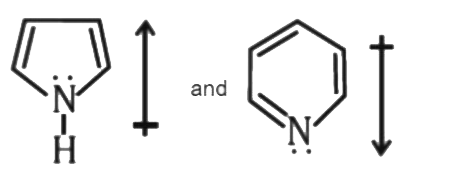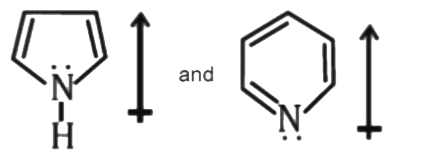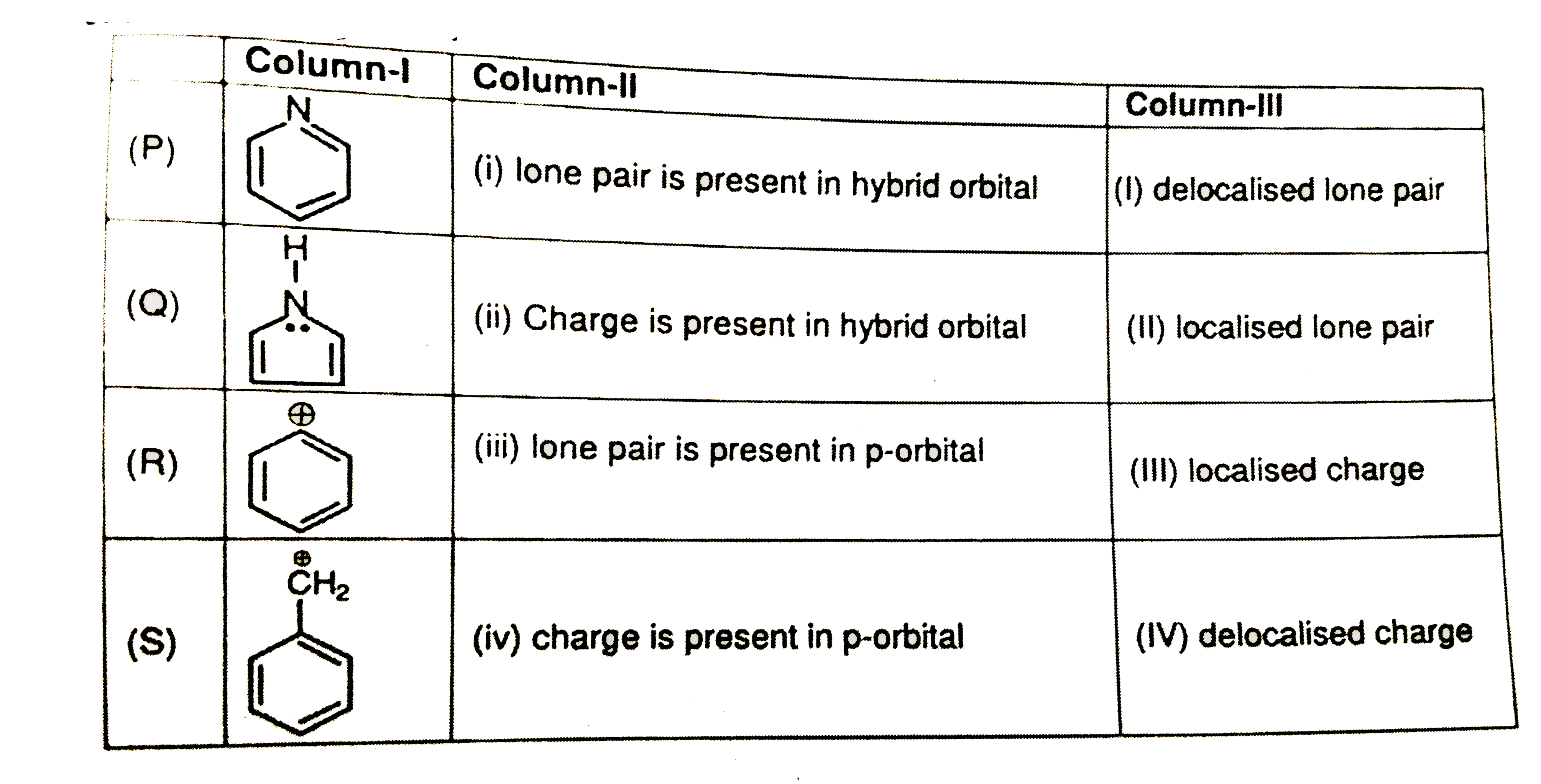The correct orientation of dipoles in pyrrole and pyridine is




The correct Answer is:A
To determine the correct orientation of dipoles in pyrrole and pyridine, we need to analyze the molecular structure and the electronegativity of the atoms involved. Here’s a step-by-step solution:
Step 1: Understand the Structures of Pyrrole and Pyridine
- Pyrrole is a five-membered ring containing four carbon atoms and one nitrogen atom. The nitrogen in pyrrole has a lone pair of electrons that participates in resonance.
- Pyridine is a six-membered aromatic ring containing five carbon atoms and one nitrogen atom. The nitrogen in pyridine does not have a lone pair that participates in resonance.
Hint: Identify the key structural differences between pyrrole and pyridine.
Step 2: Analyze Electronegativity
- Nitrogen (N) is more electronegative than carbon (C). This means that in both compounds, the nitrogen atom will attract electron density towards itself, creating a dipole moment.
Hint: Recall that electronegativity affects the distribution of electron density in a molecule.
Step 3: Determine the Direction of Dipole Moments
- In pyrrole, the lone pair on nitrogen is above the plane of the ring. This lone pair can participate in resonance, which stabilizes the molecule and affects the dipole moment. The dipole moment in pyrrole will point upwards due to the influence of the lone pair.
- In pyridine, the nitrogen's lone pair is in an sp2 hybridized orbital and does not participate in resonance with the ring. The dipole moment in pyridine will point downwards, as the nitrogen atom pulls electron density towards itself, but the lone pair does not contribute to the overall dipole direction.
Hint: Consider how lone pairs and resonance affect the orientation of dipoles in cyclic compounds.
Step 4: Summarize the Dipole Orientation
- The dipole moment in pyrrole is oriented upwards due to the resonance involving the lone pair on nitrogen.
- The dipole moment in pyridine is oriented downwards because the lone pair does not participate in resonance and the nitrogen atom pulls electron density towards itself.
Hint: Visualize the molecular structure to better understand the orientation of dipoles.
Final Answer
- The correct orientation of dipoles is:
- Pyrrole: Upwards
- Pyridine: Downwards
- Pyrrole is a five-membered ring containing four carbon atoms and one nitrogen atom. The nitrogen in pyrrole has a lone pair of electrons that participates in resonance.
- Pyridine is a six-membered aromatic ring containing five carbon atoms and one nitrogen atom. The nitrogen in pyridine does not have a lone pair that participates in resonance.
- Nitrogen (N) is more electronegative than carbon (C). This means that in both compounds, the nitrogen atom will attract electron density towards itself, creating a dipole moment.
- In pyrrole, the lone pair on nitrogen is above the plane of the ring. This lone pair can participate in resonance, which stabilizes the molecule and affects the dipole moment. The dipole moment in pyrrole will point upwards due to the influence of the lone pair.
- In pyridine, the nitrogen's lone pair is in an sp2 hybridized orbital and does not participate in resonance with the ring. The dipole moment in pyridine will point downwards, as the nitrogen atom pulls electron density towards itself, but the lone pair does not contribute to the overall dipole direction.
- The dipole moment in pyrrole is oriented upwards due to the resonance involving the lone pair on nitrogen.
- The dipole moment in pyridine is oriented downwards because the lone pair does not participate in resonance and the nitrogen atom pulls electron density towards itself.
- The correct orientation of dipoles is:
- Pyrrole: Upwards
- Pyridine: Downwards
Topper's Solved these Questions
Similar Questions
Knowledge Check
The correct order of dipole moment is :
ACH4<NF3<NH3<H2OBNF3<CH4<NH3<H2OCNH3<NF3<CH4<H2ODH2O<NH3<NF3<CH4The correct order of dipole moment is :
ACH4<NF3<NH3<H2OBNF3<CH4<NH3<H2OCNH3<NF3<CH4<H2ODH2O<NH3<NF3<CH4The correct order of dipole moment is
ACH4<NF3<NH3<H2OBNF3<CH4<NH3<H2OCNH3<NF3<CH4<H2ODH2O<NH3<NF3<CH4


 (pyrrole) is:
(pyrrole) is: